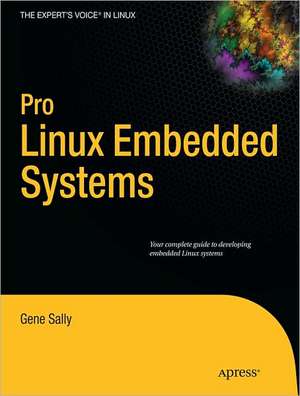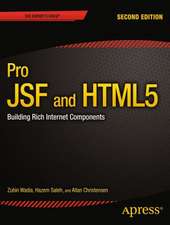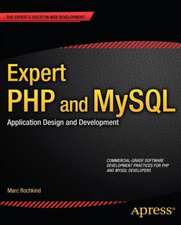Pro Linux Embedded Systems
Autor Gene Sallyen Limba Engleză Paperback – 27 dec 2009
- Modern guide for developing embedded Linux systems
- Shows you how to work with existing Linux embedded system, while still teaching how to port Linux
- Explains best practices from somebody who has done it before
Preț: 346.10 lei
Preț vechi: 432.62 lei
-20% Nou
Puncte Express: 519
Preț estimativ în valută:
66.24€ • 68.33$ • 56.06£
66.24€ • 68.33$ • 56.06£
Carte tipărită la comandă
Livrare economică 04-18 martie
Preluare comenzi: 021 569.72.76
Specificații
ISBN-13: 9781430272274
ISBN-10: 1430272279
Pagini: 423
Ilustrații: XX, 550 p.
Dimensiuni: 178 x 254 x 25 mm
Greutate: 0.79 kg
Ediția:1st ed.
Editura: Apress
Colecția Apress
Locul publicării:Berkeley, CA, United States
ISBN-10: 1430272279
Pagini: 423
Ilustrații: XX, 550 p.
Dimensiuni: 178 x 254 x 25 mm
Greutate: 0.79 kg
Ediția:1st ed.
Editura: Apress
Colecția Apress
Locul publicării:Berkeley, CA, United States
Public țintă
Popular/generalDescriere
When I got started in embedded Linux nearly a decade ago, the question was, “Should I even use an operating system?” Going with Linux frequently meant porting the operating system to run on your target hardware and building to the tools to do so. Much has changed over the years, to the point that Linux is selected by default for many projects, and the decisions revolve around what features of the operating system can be used on the project. The question today is, “How should I configure my Linux distribution?” In technology terms, this is a seismic shift in developer attitudes in a very short time frame. Linux is so pervasive in the embedded space that embedded processors and boards ship with Linux by default. Buyers simply expect that the board will boot Linux and they’ll have the tools they need for embedded development provided along with the hardware. Unlike in the early days of Linux, as a developer, you won’t be porting Linux to your board but rather configuring an already-running Linux kernel and root file system so that they suit your application.
Cuprins
- About Embedded Linux
- Configuring the Software Environment
- Target Emulation and Virtual Machines
- Starting Your Project
- Getting Linux for Your Board
- Creating a Linux Distribution from Scratch
- Booting the Board
- Configuring the Application Development Environment
- Application Development
- Debugging Applications
- Kernel Configuration and Development
- Real Time
- Using Open Source Software Projects
- BusyBox
- System Design
- System Tuning
- Deploying Applications
- Handling Field Updates
Notă biografică
Gene Sally has been working with computers ever since his awkward teenage years. For the past eight or so years, Gene has been employed as an engineer, technical writer, trainer and expert tinkerer with Linux in an embedded environment.
Caracteristici
Modern embedded hardware is more sophisticated than eve; most systems include the capabilities found on desktop systems.
This book is written from the perspective of a user employing technologies and techniques typically reserved for desktop systems.
This book is written from the perspective of a user employing technologies and techniques typically reserved for desktop systems.


















